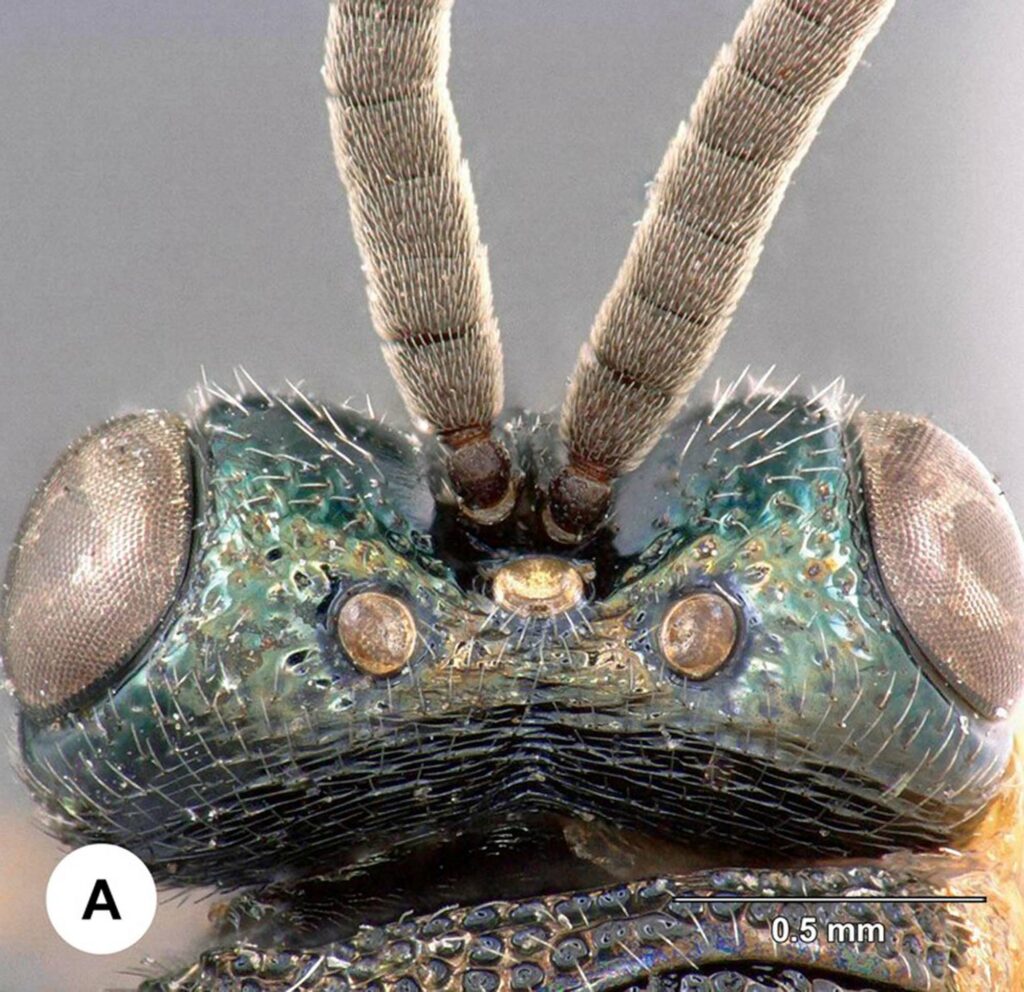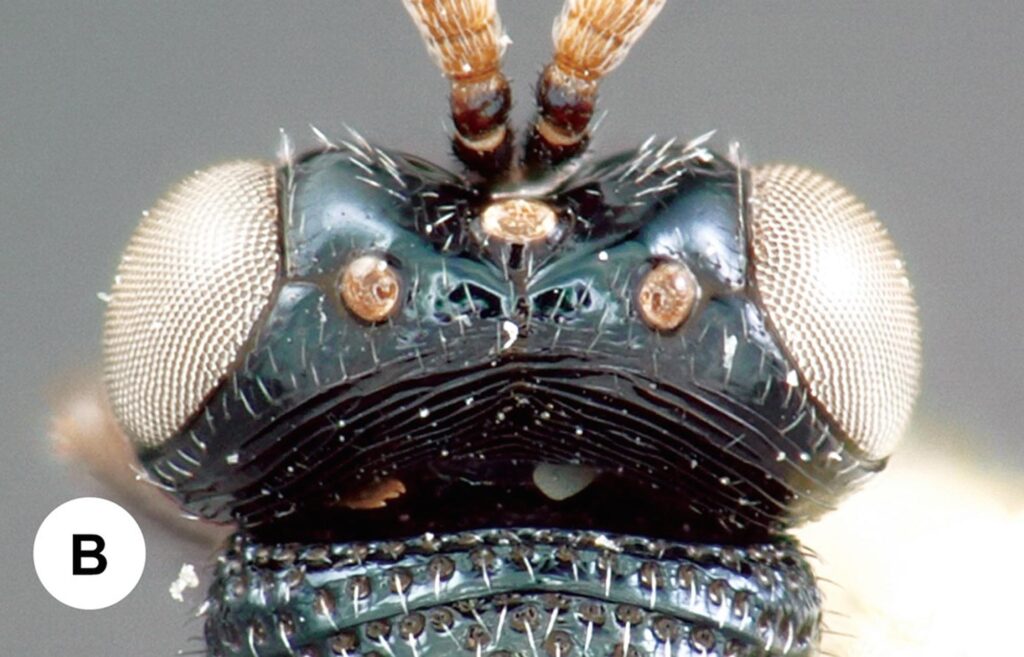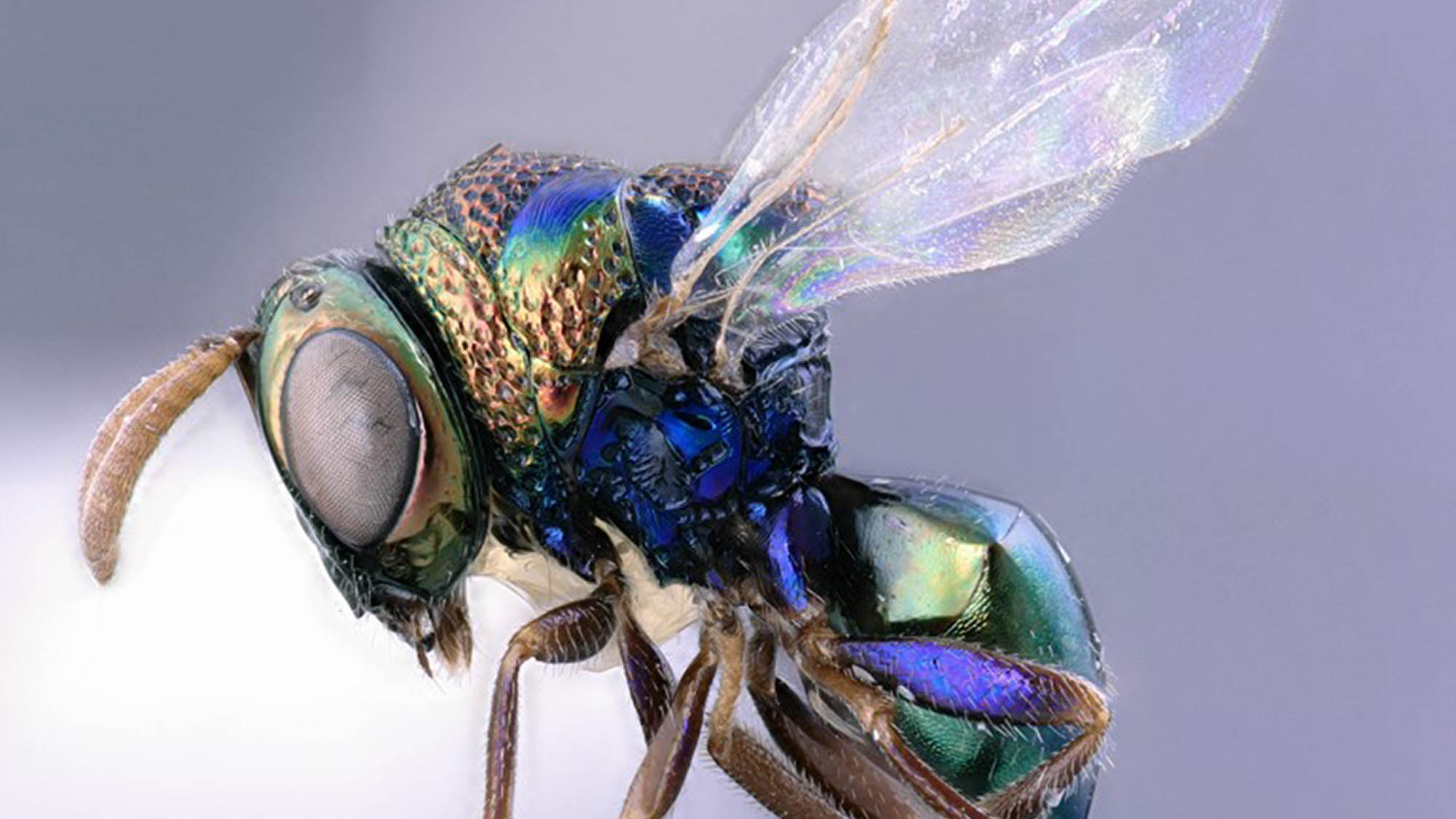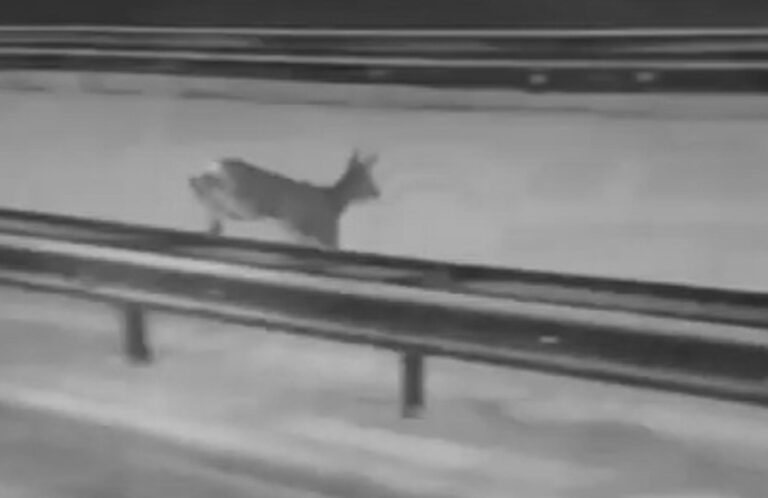A Canadian scientist has discovered a new, “hyperparasitic” wasp in the Middle East whose larvae burrow into caterpillars and can only emerge as a fully-grown wasp if it finds another parasite inside it to feed on.
The new species of wasp with the bizarre life-cycle that scientists are puzzling to understand has been named ‘Perilampus awbalus’ and lives in the United Arab Emirates in the Middle East.
The researchers, Dr Christopher Darling and his student Jeong Yoo, analysed dead specimens of the wasp as part of their research at the Royal Ontario Museum and University of Toronto, in the east-central Canadian province of Ontario.
Wasps from the Perilampus genus are a rare example of what are known as “hyperparasites”, and Dr Darling said it was very likely that the news species are hyperparasitic too. Hyperparasites are parasites that prey on other parasites.

In the case of these wasps, a female will lay its eggs on a plant, which then hatch into larvae, and which then dig into caterpillars. Then, if the caterpillars are invaded by another parasite, of a species which the team did not specify, the wasp larvae feed on it to complete their life cycle and emerge from the caterpillar as fully-grown wasps.
Dr Darling said: “I tend to think of them like Russian dolls. There’s the host. Inside that is the parasite. Inside that is the hyperparasite.”
He added: “Perilampus have unusual life cycles even by the standards of hyperparasites. The female adult selects a plant on which to lay her eggs, which hatch into larvae, which burrow into caterpillars found on those plants.”
He explained that if the caterpillars are then infested by another parasite, which Perilampus wasps eat, the larvae will burrow into the caterpillar even deeper, eventually emerging as fully-grown wasps.
But if the caterpillars are not invested by this other parasite, then the wasps are unable to complete their life cycle and die.
Dr Darling said it was unclear why the wasps have adopted such “a risky strategy”.
These four new species from the UAE are the first from this genus, along with another species in Yemen, to be identified in the Arabian Peninsula.
The project was supported by the Environment Agency Abu Dhabi and it has documented over 3,700 species, including 569 new ones.

Perilampus wasp discovered in UAE and Yemen. “reproduced with permission from the copyright holder”. 
Perilampus wasp discovered in UAE and Yemen. “reproduced with permission from the copyright holder”. 
Perilampus wasp discovered in UAE and Yemen. “reproduced with permission from the copyright holder”.
To find out more about the author, editor or agency that supplied this story – please click below.
Story By: Joseph Golder, Sub-Editor: Joseph Golder, Agency: Newsflash
The Ananova page is created by and dedicated to professional, independent freelance journalists. It is a place for us to showcase our work. When our news is sold to our media partners, we will include the link here.




